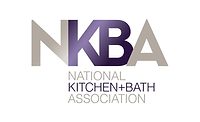NKBA Forecasts Growth Despite Economic Headwinds

Photo: Daltile.
Despite inflation and mortgage rate increases, the overall annual forecast for the kitchen and bath market still represents a double-digit increase over 2021, according to the National Kitchen and Bath Association (NKBA) 2022 Kitchen & Bath Market Outlook.
“This new Market Outlook report provides revised market size estimates and 2022 forecasts in the Kitchen and Bath Industry, as well as gauges the economic and housing market shifts that continue to impact our market,” said Bill Darcy, CEO of the National Kitchen & Bath Association (NKBA). “Despite some economic headwinds, kitchen and bath remodeling demand remains strong. Residential kitchen and bath spending is anticipated to grow by 16% to $189 billion in 2022.”
- Full-year kitchen and bath spending is expected to reach $189 billion, 16 percent higher than 2021, yet $10 billion lower than the initial 2022 forecast.
- New construction is projected to represent over 60 percent of industry revenues, driven by a record number of new home builds. The report forecasts 21 percent YOY new construction growth, unchanged from the initial report in January.
- Higher-end activity has been revised upward due to rapid home appreciation and client movement on deferred projects. With upwards of 20 percent gains, mid-range projects are expected to register the biggest YOY increases based on growth in new construction. Lower-end work projection has been sharply scaled back due to higher inflation causing many to put their projects on hold.
- Nearly three in four homeowners are locked into mortgage rates below 4 percent, making it more cost-effective to remodel than to move. This, along with record-high homeowner equity per household and a high number of homes in prime remodeling years, bodes well for the second half of 2022.
- While builders are working through the substantial backlog of homes in various stages of completion, the number of new housing starts are falling due to high mortgage rates and home prices. This combination has led to a shrinking gap between home starts and completions.
- The Fed has tried to control inflation with three interest rate hikes this year, the latest in June. Of note: The last three times the Fed initiated a cycle of rate hikes, a recession ensued within a year.
“We anticipate moderate declines in kitchen and bath spending in the event of a recession next year,” Darcy said. “Our view is informed by improved housing and consumer fundamentals and a likely less severe recession, relative to recent history if one were to occur.”
Looking for a reprint of this article?
From high-res PDFs to custom plaques, order your copy today!






